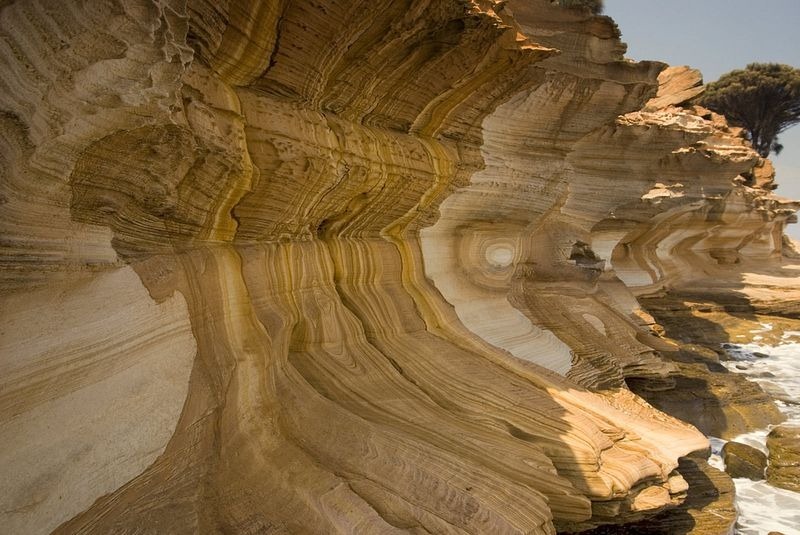
The beautifully patterned sandstone rocks of Painted Cliffs are one of Maria island’s most popular attraction. The mountainous island located in the Tasman Sea, off the east coast of Tasmania, Australia, was once a penal colony for convicts who committed offences against the French colonists. Today, the entire island and the ocean around is a national park full of birds, animals and marine life.

The Painted Cliffs are located at the end of Hopground beach. The wonderful patterns on the exposed rocks along the shore were caused by ground water percolating down through the porous sandstone rocks and leaving traces of iron oxides, which have stained the rock formation. The regular patterns of red, orange and yellow bands and rings are due to fractures, joints and layers present within the sandstone.

The iron in the groundwater probably came from two prominent hills known as Bishop and Clerk and Mt. Maria, located at the highest point of Maria island. These peaks are composed of iron-rich dolerite rocks that weathered over millions of years ago when the climate was monsoonal, contributing to the iron-oxide staining on the Painted Cliffs.

Aside from the painted patterns, weathering of the rocks by salt crystal from sea spray have created a beautiful honeycomb pattern. Rock fragments moved around by the water have gradually worn small potholes and notches into the cliff face, eventually resulting in the undercutting of the cliff.










